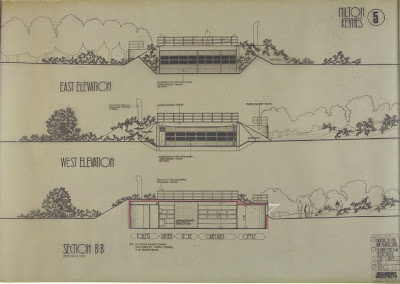Make-good of London stepped in when the planning process for a new play area had become contentious. A series of meetings with the estate's young people, in which they built their ideas out of cardboard at 1:1 scale, resulted in the concept of an activity course in which cubes of various sizes and materials offered "opportunities to hide, jump, ride a bike or scooter, sit, socialise, and role-play".
Ultimately, 21 cubes were constructed: 8 of wood with open interiors to form chairs, chariots, soap boxes and hiding spaces, 8 solid cubes to line up as hurdles (or look at your reflection in the shiny stainless steel) and 5 'smooth and cooling' concrete cubes. All of the cubes can be used together as seating for an event.
I think it's fascinating that a resident's group that had been unable to come to consensus over 'traditional' designs presented by playground fabricators achieved unity with such a non-conventional plan. It's a testimony to the power of involving the community with the design process, and of their willingness to be more open to design innovation than we often assume.
The playscape's reception was summed up by a ten-year old resident: "I think it's magnificent and cool and exciting and it is much more fun than the old park. We made this one."
Catherine Greig is the founder and director of make:good, and I talked to her about posting her projects back in July yet here it is nearly December, which is just a reminder that if you send me stuff (which is great, keep doing it!) it may take me a month or so to get to your email and another few months for it to work its way onto the blog. There is a lot of correspondence to keep up with at this point, and also that pesky issue of keeping my real job going.
SO, if you happen to be in London and would rather just chat in person: I'm traveling over soon, and there will be an informal gathering from noon to two on Friday, December 3rd to talk about new playground ideas. If you're interested send a quick RSVP (by comment or by direct email, either way) and based on the number of replies a location will be announced shortly. Hope to see you!










































